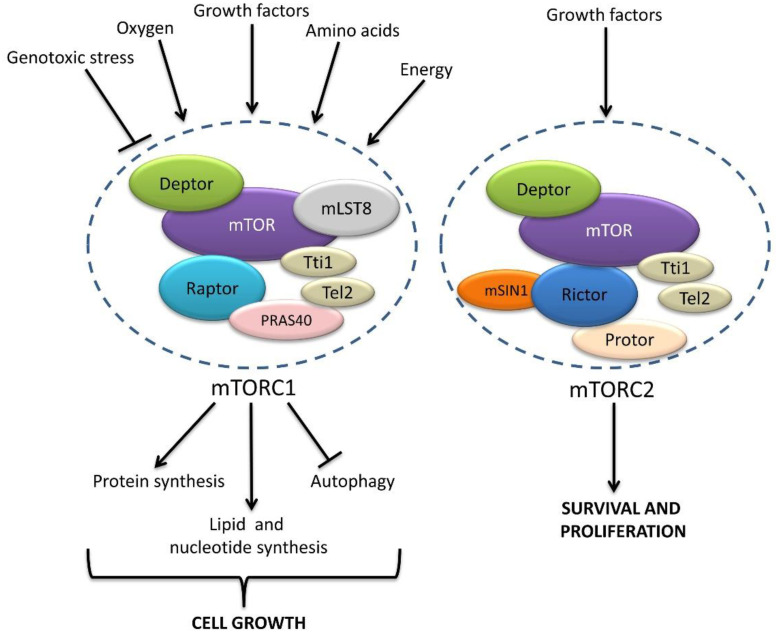Figure 2.
Schematic representation of mTORC1 and mTORC2. mTORC1 and mTORC2 share the catalytic mTOR kinase and the regulatory subunits Deptor, mLST8, and Tti/Tel2. In addition, mTORC1 consists of Raptor and PRAS40, conferring mTORC1 the ability to respond to a broad range of environmental signals, including DNA damage and growth factors, as well as oxygen, nutrient, and energy levels. mTORC1 phosphorylates multiple targets to control the balance between anabolic (leading to cell growth) and catabolic (leading to energy production) processes. The mTORC2 complex contains the subunits Rictor, Sin1, and Protor and mediates the response to growth factors, contributing to cell proliferation and survival.

